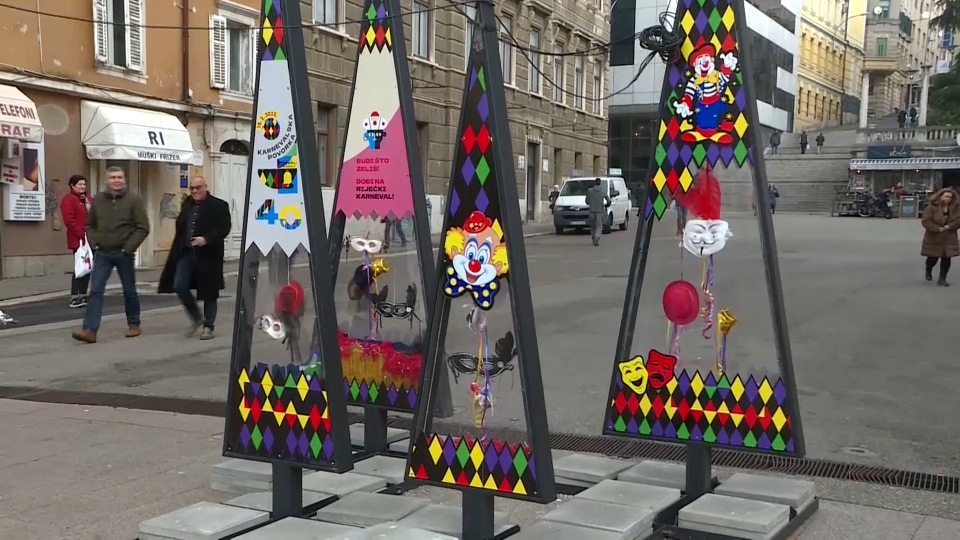
Almost 9,000 masqued participants in 92 groups and 56 allegorical floats will take part in the grand International Carnival Parade of the 40th Rijeka Carnival on Sunday, 19 February, a press conference heard earlier this week.
The International Carnival Parade is the jewel in the crown of the carnival festivities in Kvarner and beyond. Competitions in creativity, humour and originality, fireworks of colours and shapes result in a parade of hundreds of allegorical floats, thousands of masks and a countless number of visitors from home and abroad.
Groups from all parts of Croatia as well as from Italy, Hungary, Montenegro, Macedonia, India and Malaysia have been announced.
Rijeka Carnival begins in mid-January. The most popular event of the carnival – the International Carnival Parade always takes place on the Sunday before Ash Wednesday and this year it will be held on Sunday, 19 February.
At the beginning of the carnival, after the Carnival’s queen is crowned, the Mayor (symbolically) delivers the keys to the City, to the Master of Carnival.
For the following month, the city of Rijeka and surrounding areas embrace the carnival spirit.
How do they celebrate the carnival in Rijeka?
After the carnival, a flag is raised and the carnival festivities have been officially proclaimed, the Mayor of Rijeka hands over the keys of the city to the Master of Carnival, which is a symbolic gesture of handing over the rule of the town to the masks.
During the month-long carnival, Rijeka embraces the carnival spirit with lots of celebrations. There are parades, parties, masked balls, concerts, rituals, charity events, exhibitions, and cultural and sporting events.
All these events build up to the most anticipated event -- the International Carnival Parade, which attracts spectators and participants from all around the world.
The carnival winds down with the burning of the Pust – a symbolic goodbye to everything negative from the previous year. On Shrove Tuesday, the last official day of Rijeka Carnival, the keys of the city are returned to the mayor. The carnival flag is lowered symbolising the official end of carnival festivities.
History of Rijeka Carnival
Rijeka Carnival is a pre-Lenten Christian celebration but stretches back to before the area became Christian to the city’s pagan roots. Rijeka Carnival has traditions that come from when the Serbian tribes used to celebrate the spring equinox. The Pagans would throw ceremonies to drive away the previous year’s wickedness and usher in brighter days.
According to the Slavic Pagan traditions, carnivals are about redemption. It was a way to erase all the bad things that had happened in the previous year as well as remove the evil spirits and usher in the spring. This was done by a group of men who dress up in animal skins called the Zvončari.
In the Middle Ages, the Rijeka Carnival was similar to other carnivals around Europe, such as the Venice Carnival. Locals would put on fancy dresses and attend masked balls. Carnivals became a pre-Lenten celebration when Christianity took over Europe.
Burning of the Pust
Three days after the grand finale parade, an event called Burning of the Pust takes place. The Pust is a satirical puppet, usually named after some unpopular politician or another unpopular figure, who gets set on fire.
The locals place all their guilt and blame for the sins of the past year on the puppet. The Pust is then put on trial and found guilty. He is then taken out to sea and burnt as a sacrifice. Burning of the Pust marks a new beginning and signifies a better year to come.
Kakvo je tvoje mišljenje o ovome?
Pridruži se raspravi ili pročitaj komentare



 Srbija
Srbija
 Bosna i Hercegovina
Bosna i Hercegovina
 Slovenija
Slovenija







